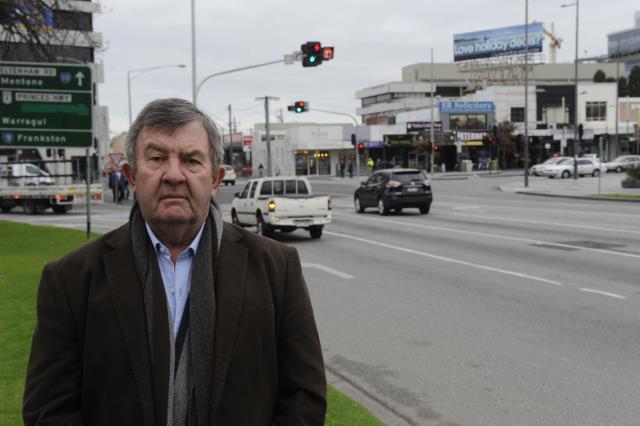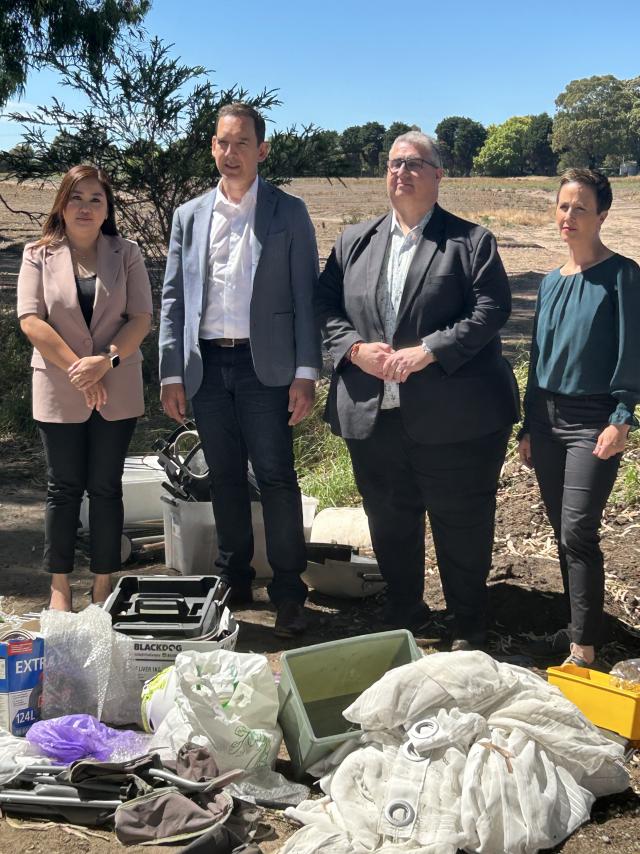Thirty years ago, despite plenty of opposition, City of Greater Dandenong was “tumultuously” forced into being.
The former Dandenong and Springvale municipalities merged on 15 December 1994, as part of sweeping council amalgamations under the Kennett State Government.
One of the controversies was the new city’s name, initially said to be City of Heatherton.
A group of Dandenong councillors including Frank Holohan and mayor David Kelly resisted the State Government’s preference, and successfully lobbied for Greater Dandenong as the moniker.
“They twisted their arm, saying that Dandenong is where everything including Springvale and Berwick sprang from,” former Dandenong and Greater Dandenong councillor John Kelly says.
“(The Premier Jeff) Kennett was quick to change it to Greater Dandenong – it was a win for Dave and Frank.”
The outcome didn’t please the larger Springvale Council. With 94,000 residents, it was symbolically made the ‘second fiddle’ to the 60,000-strong Dandenong Council.
“Our city became a suburb overnight,” says the then Springvale councillor Roz Blades.
“It was tumultuous. The name changed and we had no input into that.
“There was a lot of angst, a lot of people upset over it. If we had to be together as an amalgamation, we thought a neutral name would be fair.”
Contrary to rumours, Springvale didn’t push for Heatherton, Blades said. They didn’t support the city being named after an existing township and a road.
They hadn’t settled on a name but preferred ‘City of Sandown’, she says.
Perhaps even more profoundly, Springvale didn’t want to join Dandenong in the first place.
Springvale had lobbied to merge west, retaining Dingley Village and adding Braeside Park and the bayside suburbs Mordialloc and Chelsea.
Meanwhile, Dandenong councillors submitted for a 180,000-resident ‘super city’ that would absorb the bulk of City of Springvale and 40 per cent of City of Berwick.
At the time, Springvale mayor Phil Reed slammed the proposal as “greedy” – as well as severing Dingley Village from the existing Springvale council area.
Meanwhile, the then-CEO of Berwick Neil Lucas said Dandenong had “no plan” for the remaining 60 per cent of Berwick residents.
It would commit the “residents of the growth corridor to a lower standard of living in the future”, he told Dandenong Journal at the time.
As history shows, Chelsea wasn’t keen in joining Springvale, Blades says. And so with “no discussion”, the State Government opted for a Springvale and Dandenong alliance, without Dingley Village.
“We were aghast,” Blades said.
“We didn’t know how we would make it work. But naturally, we would strive to make the very best of it.”
For its first three years, the new Greater Dandenong didn’t have councillors. It was overseen by three commissioners Ian Cathie, John Nixon and Margaret Nicholls.
Blades and Kelly were among the re-elected councillors who formed the first council. They recall the commissioners doing a great job.
Kelly recalls there were also frictions between the “Labor-leaning” Springvale councillors and the more business-oriented Dandenong councillors at the first meetings.
“It was as tough for them as it was for us. The two councils were a bit divided when we came together on where money should be spent and how it was spent.
“Some of the ideas from Springvale were different from Dandenong.
“It took at least a term to get used to it.”
Just prior to merging, Dandenong brought forward spending on fixing issues at its market, town hall and sportsgrounds, Kelly said.
“We were thinking what are they going to do with our money when we merged.
“There was also a feeling that knowledge would be lost (due to staff cuts) but people picked it up as time went on.”
Blades says the areas were undeniably different. Dandenong had the stock yards, industries and market, Springvale had the Enterprise hostel for new migrants.
“Every time money was spent in Dandenong, people in Springvale didn’t like it.
“We didn’t know each other well. I remember it being quite frantic at the time but I had a determination that it was going to work. We didn’t have a choice.
“When I was mayor of Greater Dandenong, I went to great pains when in Dandenong to wear the Springvale (mayoral) chains and in Springvale to wear the Dandenong chains.”
For years, the council meetings and administration offices were shared between Springvale and Dandenong.
Meetings and officers all moved to the new Dandenong Civic Centre in 2014. That was when Greater Dandenong truly welded together, says Blades.
Kelly agrees, saying they’d hung onto the dual administration hubs for too long.
“I thought it was a bit irrational. But it was always going to take time to take the band-aid off it all.”
Kelly and Blades agreed that council mergers needed to happen in some cases.
Especially for small inner-Melbourne municipalities such as Collingwood, Fitzroy and Richmond, each with their own town hall, executives, staff and garbage trucks.
However outer suburban councils such as Knox and Frankston didn’t merge. And they kept their name.
“Whether or not Springvale with 94,000 people needed to amalgamate, I don’t know,” Blades said.
For Kelly, it’s a hard question about whether the merger was worth it.
“Most in the public were accepting of the merger. It was mainly those in council or who worked for the council who were opposed. But after all those years we all move on – we have to accept it.
“I don’t think it’s done us any bad.”








